A Bonferroni Correction refers to the process of adjusting the alpha (α) level for a family of statistical tests so that we control for the probability of committing a type I error.
The formula for a Bonferroni Correction is as follows:
αnew = αoriginal / n
where:
- αoriginal: The original α level
- n: The total number of comparisons or tests being performed
For example, if we perform three statistical tests at once and wish to use α = .05 for each test, the Bonferroni Correction tell us that we should use αnew = .01667.
αnew = αoriginal / n = .05 / 3 = .01667
Thus, we should only reject the null hypothesis of each individual test if the p-value of the test is less than .01667.
This type of correction is often made in post-hoc tests following an ANOVA when we want to compare several group means at once.
The following step-by-step example shows how to perform a Bonferroni Correction following a one-way ANOVA in Excel.
Step 1: Create the Data
First, let’s create a fake dataset that shows the exam scores of students who used one of three different studying techniques to prepare for the exam:
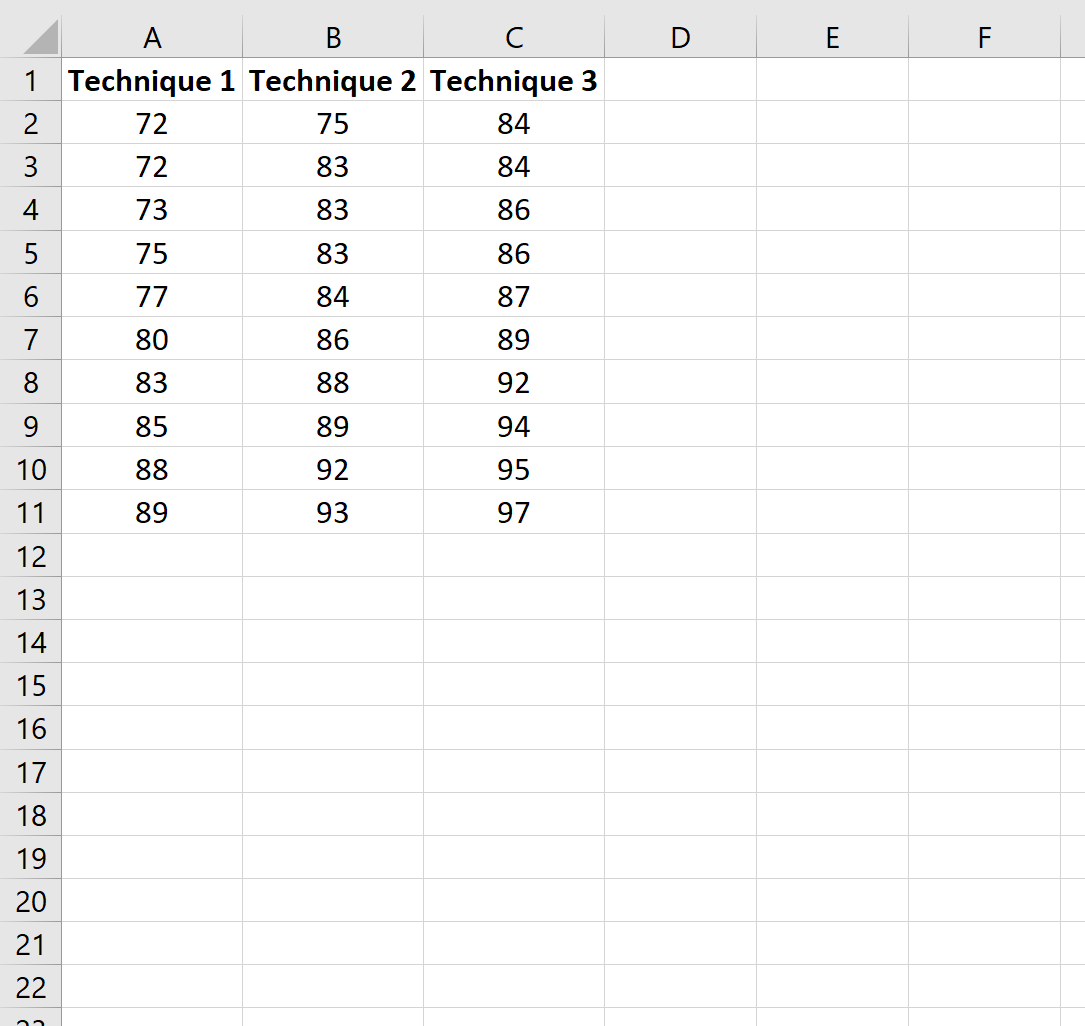
Step 2: Perform the One-Way ANOVA
Next, let’s perform a one-way ANOVA to determine if the mean exam scores are equal across all three groups.
First, highlight all of the data including the column headers:

Next, click the Data tab along the top ribbon and then click Data Analysis:
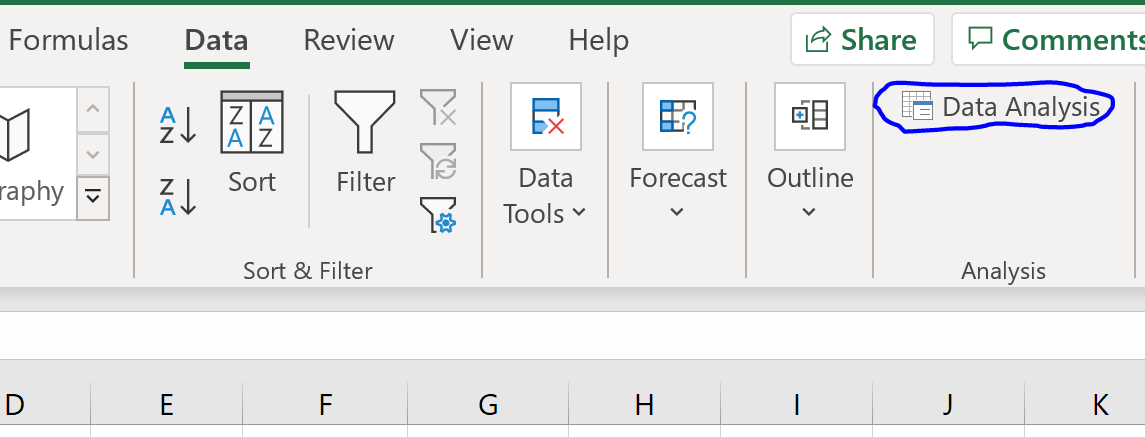
If you don’t see this option available, you need to first load the Analysis ToolPak.
In the window that appears, click Anova: Single Factor and then click OK.
Fill in the following information, then click OK:
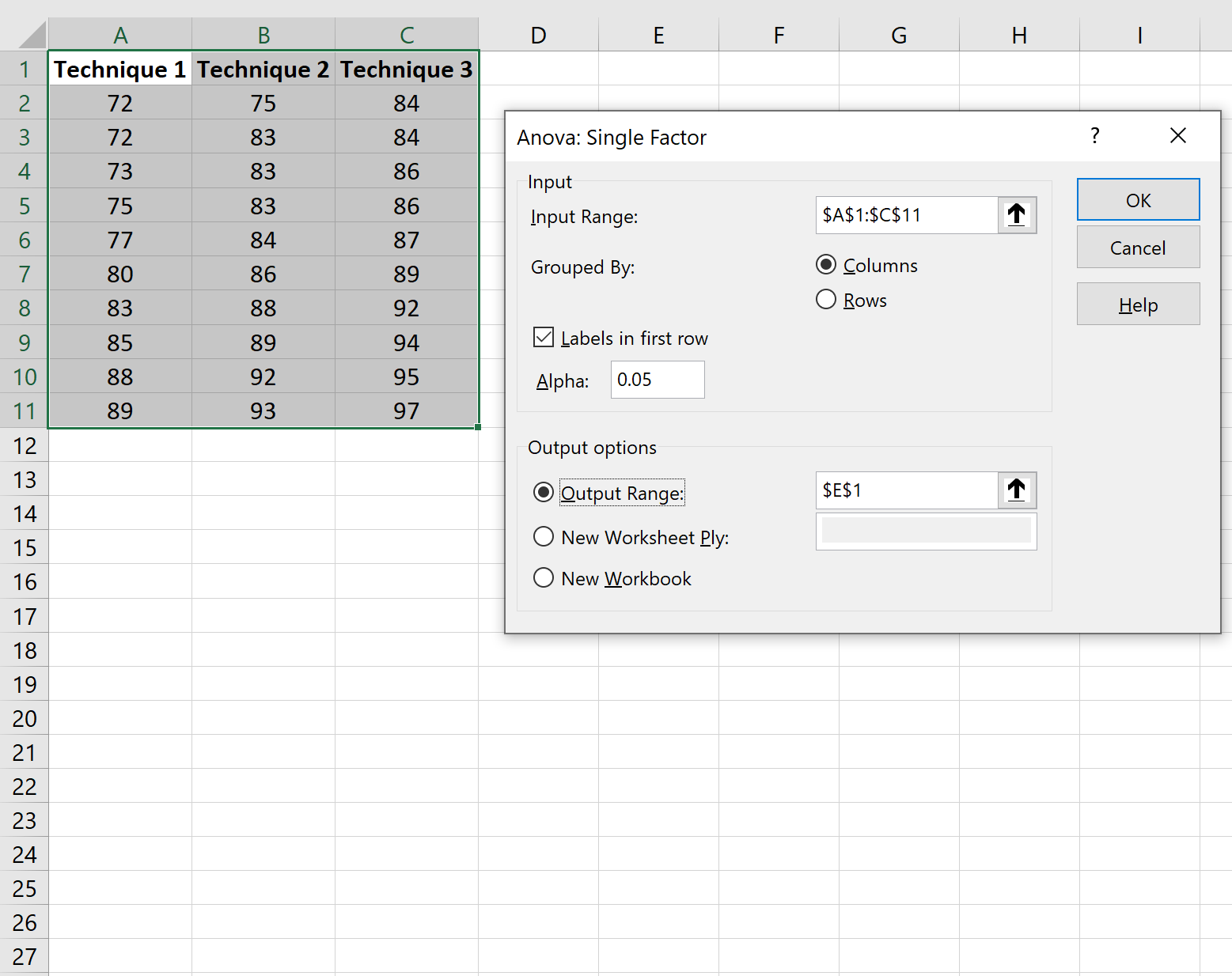
The results of the one-way ANOVA will automatically appear:
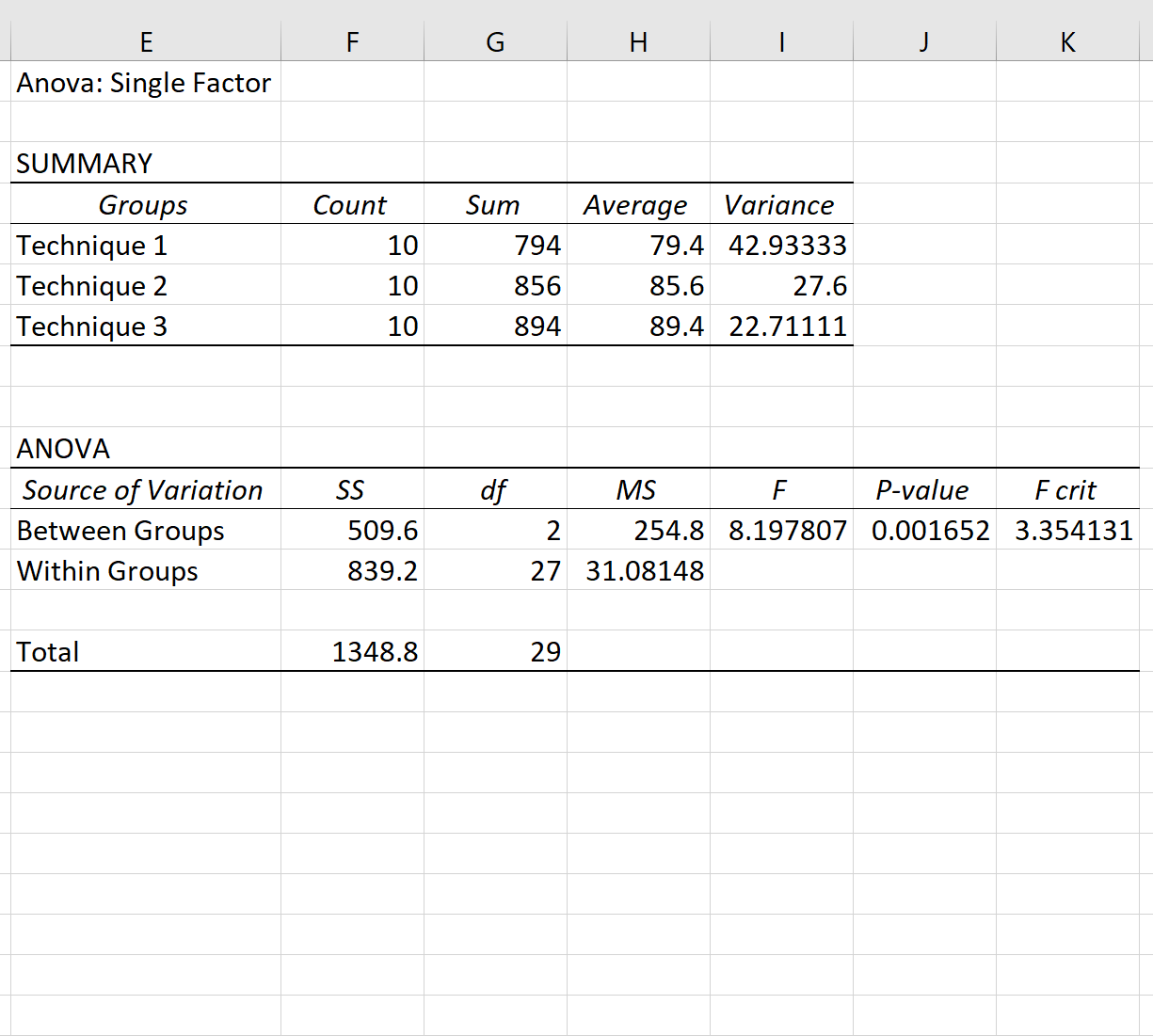
Recall that a one-way ANOVA has the following null and alternative hypotheses:
- H0 (null hypothesis): All group means are equal.
- HA (alternative hypothesis): At least one group mean is different from the rest.
Since the p-value in the ANOVA table (0.001652) is less than .05, we have sufficient evidence to reject the null hypothesis. In other words, the mean exam scores between the three groups are not equal.
Next, we can perform multiple comparisons using a Bonferroni correction between the three groups to see exactly which group means are different.
Step 3: Perform Multiple Comparisons Using a Bonferroni Correction
Using a Bonferroni correction, we can calculate the adjusted alpha level as follows:
αnew = αoriginal / n
In our example, we’ll be performing the following three comparisons:
- Technique 1 vs. Technique 2
- Technique 1 vs. Technique 3
- Technique 2 vs. Technique 3
Since we want to use α = .05 for each test, the Bonferroni Correction tell us that we should use αnew = .0167.

Next, we’ll use a t-test to compare the means between each group. In Excel, we can use the following syntax:
=TTEST(Array1, Array2, tails=2, type=2)
where:
- Array1: The first array of data
- Array2: The second array of data
- tails: The number of tails of the test. We’ll use “2” to indicate a two-tailed test.
- type: The type of t-test to perform. We’ll use “2” to indicate a t-test with equal variances.
The following screenshot shows how to perform each t-test:
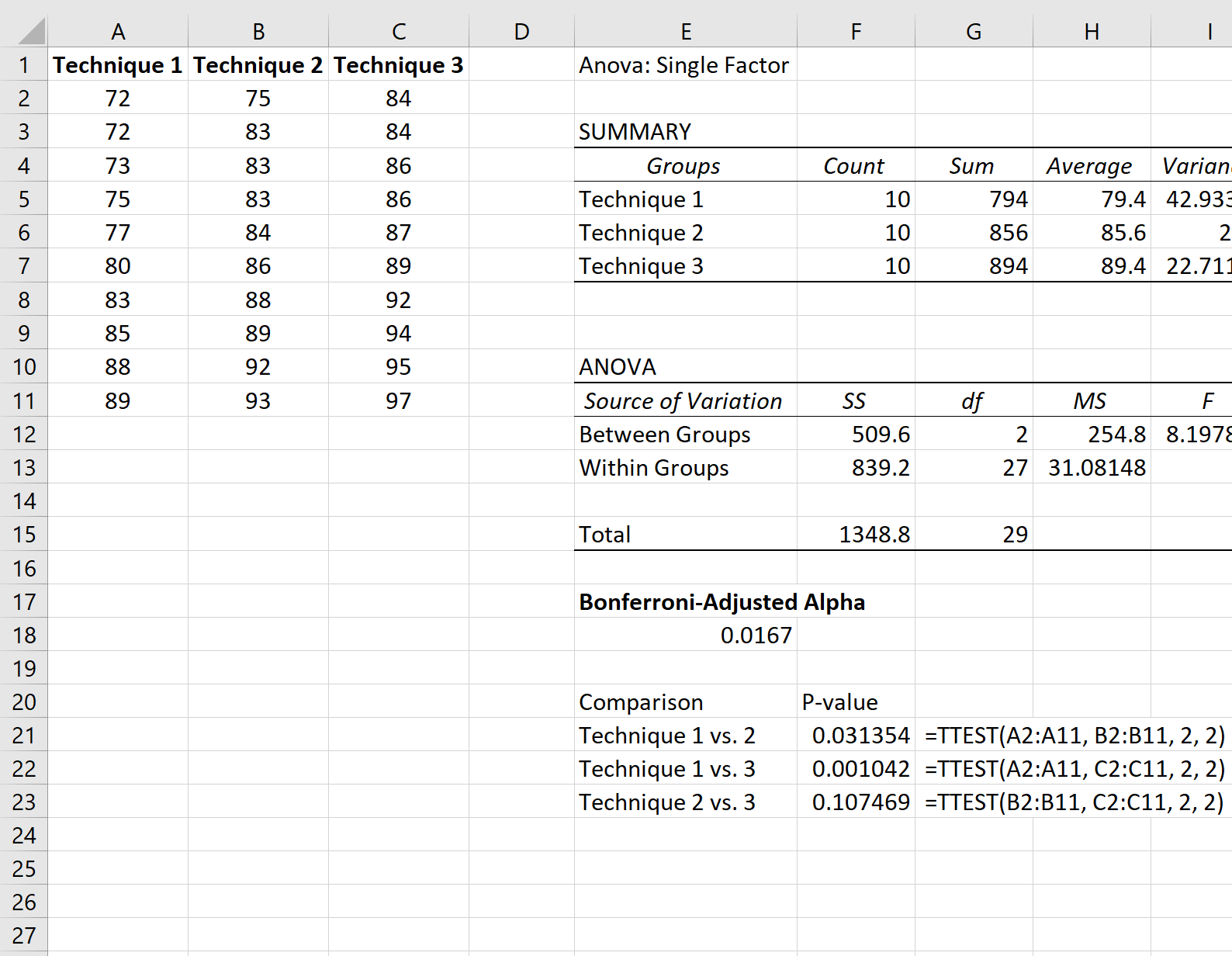
The only p-value that is less than the Bonferroni-adjusted alpha level is from the comparison between technique 1 vs. technique 2, which had a p-value of 0.001042.
Thus, we would conclude that only statistically significant difference in mean exam scores was between technique 1 and technique 2.
Additional Resources
What is the Family-wise Error Rate?
The Bonferroni Correction: Definition & Example
Bonferroni Correction Calculator